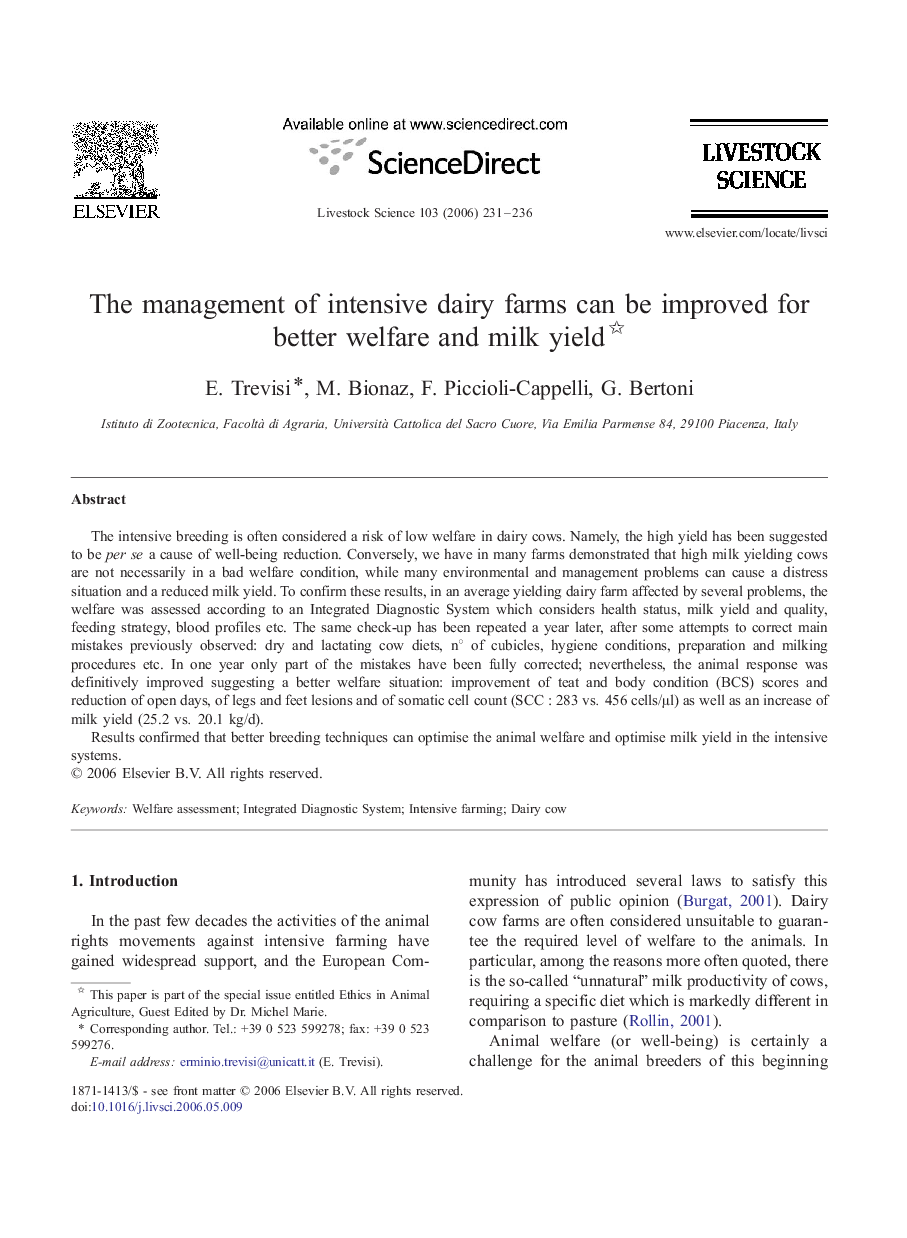| Article ID | Journal | Published Year | Pages | File Type |
|---|---|---|---|---|
| 2449189 | Livestock Science | 2006 | 6 Pages |
The intensive breeding is often considered a risk of low welfare in dairy cows. Namely, the high yield has been suggested to be per se a cause of well-being reduction. Conversely, we have in many farms demonstrated that high milk yielding cows are not necessarily in a bad welfare condition, while many environmental and management problems can cause a distress situation and a reduced milk yield. To confirm these results, in an average yielding dairy farm affected by several problems, the welfare was assessed according to an Integrated Diagnostic System which considers health status, milk yield and quality, feeding strategy, blood profiles etc. The same check-up has been repeated a year later, after some attempts to correct main mistakes previously observed: dry and lactating cow diets, n° of cubicles, hygiene conditions, preparation and milking procedures etc. In one year only part of the mistakes have been fully corrected; nevertheless, the animal response was definitively improved suggesting a better welfare situation: improvement of teat and body condition (BCS) scores and reduction of open days, of legs and feet lesions and of somatic cell count (SCC : 283 vs. 456 cells/μl) as well as an increase of milk yield (25.2 vs. 20.1 kg/d).Results confirmed that better breeding techniques can optimise the animal welfare and optimise milk yield in the intensive systems.
